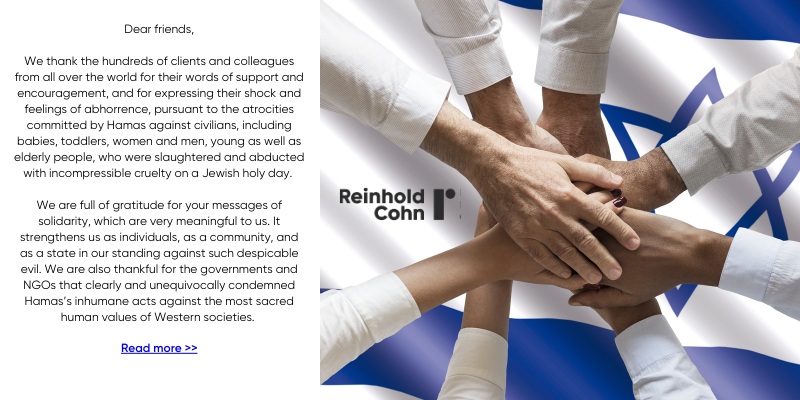Pharmaceutical Labeling Soon to Include Brand Name in Additional Languages: A New Factor to Consider in Trademark Registration

Amendments 17 and 20 to the Pharmacists Ordinance, coming into effect on August 1, 2012, will require pharmaceutical labeling to indicate certain particulars, including the brand name, not only in Hebrew and English, but also in Arabic and Russian.
At present, only non-prescription pharmaceuticals which are permitted for general sale (i.e., which are not sold in a pharmacy or by a pharmacist) are required by applicable administrative regulations1 to be labeled with the pharmaceutical’s brand name in four languages – Hebrew, English, Arabic and Russian. Other pharmaceuticals – namely, any pharmaceuticals dispensed in a pharmacy or by a pharmacist (either with or without a prescription) – have so far been required to be labeled with the brand name in Hebrew and in English.2
It is only recently that the Pharmacists Ordinance3 has been amended4 to require that the brand name of a preparation be indicated in all four languages on the labeling. This issue was previously partially regulated by administrative regulations. As of August 1, 2012, labels of both prescription pharmaceuticals and any over-the-counter (OTC) pharmaceuticals will have to include several important details, including the brand name of a preparation, in four languages – Hebrew, Arabic, English and Russian.5
A revised Practice Guideline of the Ministry of Health, which would set forth the specific guidelines for labeling pharmaceuticals in this regard, is forthcoming, but no specific time has been announced for its publication.
In light of the new labeling requirements that require indicating the pharmaceutical’s brand name in four languages, it is generally advisable to apply for trademark registration in respect of the product name in each and all of these languages, in order to ensure optimal protection for the brand.
1 The Pharmacists Regulations (Sale of a Non-Prescription Preparation Other Than in a Pharmacy or Other Than by a Pharmacist), 5765 – 2004, Regulation 13(b), implemented in the Ministry of Health Practice Guideline No. 54 of 2004, section 3.2.2.
2 The Pharmacists Regulations (Preparations), 5746 – 1986, Regulation 20, see also Regulation 22; implemented in the Ministry of Health Practice Guideline 43 of 2007, section 3.2.1.1.
3 The Pharmacists Ordinance [New Version], 5741 – 1981, an act of primary legislation governing the marketing, labeling and dispensation of pharmaceuticals in Israel.
4 The enactment in 2010 and 2011 of Amendments 17 and 20 to the Pharmacists Ordinance.
Section 30 of the Pharmacists Ordinance as amended (in an informal translation) will read:
“(a) Any dispensed medicine and medicinal drug shall be delivered in bottles or packages adequately sealed and labeled with a label that shall indicate the name of the pharmacy, the serial number of the prescription as recorded in the register of prescriptions, the name of the patient and usage instructions; the label shall also indicate in Hebrew, Arabic, English and Russian the name of the preparation and, in respect of a preparation for which a consumer information leaflet is included, also the words “Please see the consumer information leaflet before use”.
(a1) Packaging of a non-prescription preparation, other than a non-prescription preparation sold in accordance with section 42, shall also be marked in a clear and legible manner with the following:
•(1) In Hebrew – the name of the preparation; the intended use; cautionary labels as defined in the Pharmacists Order (Classification and Handling of Poisons), 5733 – 1972; the words “Please see the consumer insert before use”; any other marking prescribed by the Director;
•(2) In Arabic, English and Russian – the name of the preparation; the words “Please see the consumer information leaflet before use”;
•(3) The active ingredient.
(b) Medicines for external use shall also be labeled with an orange label bearing the words “For external use” in Hebrew, Arabic, English and Russian.”
5 Section 42 provides in the relevant part (in an informal translation):
“(b) Retail of a non-prescription preparation other than in a pharmacy or other than by a pharmacist shall be permitted when it is made in accordance with the provisions prescribed by the Minister of Health under subsection (c).
(c) For the purpose of protecting public health, the Minister of Health shall prescribe, with the approval of the Labor, Welfare and Health Committee of the Knesset, provisions regarding retail of a non-prescription preparation other than in a pharmacy or other than by a pharmacist, in the following matters:
•(1) …
•(2) Conditions of its packaging, including the quantity of preparations in each package;
•(3) Conditions of its possession, storage and labeling;
•(4) … .”
Regulation 13(b) of the Pharmacists Regulations (Sale of a Non-Prescription Preparation Other Than in a Pharmacy or Other Than by a Pharmacist), 5765 – 2004, enacted under section 42(c) of the Pharmacists Ordinance, provides in the relevant part as follows (in an informal translation):
“(b) Notwithstanding the provisions of subsection (a), the name of the preparation, the intended use and the referral to the consumer information leaflet shall be also indicated in the Arabic, English and Russian languages; …”
This article is provided for general information only. It is not intended as legal advice or opinion and cannot be relied upon as such. Advice on specific matters may be provided by our group’s attorneys.

